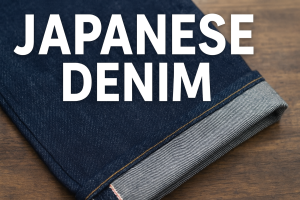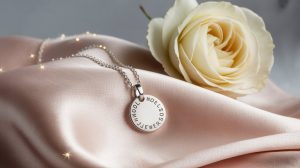Japanese Denim: History, Quality, and Why These Jeans Are Worth the Investment
During my college years, I remember standing in line outside a local bar when I noticed the guy at the door wearing jeans unlike anything I had seen before. They looked sturdy, stylish, and had a unique finish at the cuff. Curious, I asked him about them, and he proudly told me they were Japanese denim — a style of jeans known worldwide for their exceptional quality and craftsmanship. That short conversation opened up an entire world of denim culture that I had never considered before.
What Makes Japanese Denim Different?
Unlike mass-produced jeans you can pick up at any department store, Japanese denim is often made using traditional methods that have been preserved for decades. The fabric is typically woven on old-fashioned shuttle looms, which create tightly woven edges that don’t fray. This special type of fabric is called selvedge denim — short for “self-edge.”
The result is jeans that are heavier, more durable, and built to last far longer than regular denim. In fact, many fans of Japanese denim see their jeans as an investment rather than just another piece of clothing.
The Appeal of Raw Denim
Another defining feature of Japanese denim is that much of it is made from raw denim, meaning the fabric hasn’t been washed or treated before being stitched into jeans. At first, raw denim feels stiff and dark, but over time, it transforms with wear.
The dye fades slowly, leaving behind patterns that reflect the lifestyle of the wearer. Every crease, every step, every daily routine leaves a personal imprint on the jeans. These unique fading patterns — called “whiskers” and “honeycombs” by enthusiasts — make every pair of Japanese denim jeans one of a kind.
Why Japan Became the Home of Premium Denim
After World War II, most of the world shifted to modern machines to mass-produce textiles. Japan, however, preserved many of the old shuttle looms. Over the years, Japanese artisans mastered the craft of weaving and dyeing denim, perfecting techniques that gave the fabric its distinct durability and character.
Today, brands like ONI Denim, Pure Blue Japan, Momotaro, and Samurai Jeans are celebrated globally for pushing denim craftsmanship to an art form. Many fashion enthusiasts even travel to Japan just to buy authentic pairs directly from local shops.
The Culture of Japanese Denim
What makes Japanese denim even more fascinating is the community around it. Enthusiasts proudly share the progress of their fades on social media, documenting how their jeans evolve over months and years.
Instead of replacing jeans when they age, owners often repair them, celebrating the wear as part of the story. This culture of sustainability — investing in one pair of jeans that lasts years instead of constantly buying new ones — resonates with those who value slow fashion and eco-friendly choices.
Where to Find Japanese Denim
If you’re in a major city, chances are there’s at least one boutique that specializes in Japanese denim. Stores like Self Edge in Los Angeles or Blue in Green in New York stock a wide range of brands. Online retailers also make these jeans accessible to global buyers, though many enthusiasts still prefer trying them in person for the perfect fit.
Why Japanese Denim is Worth It
For some, paying a premium price for jeans might seem unnecessary. But those who own Japanese denim often say the quality, comfort, and character of the jeans justify the cost. From the deep indigo dye to the unique fades, each pair becomes more than just clothing — it becomes a personal story stitched into fabric.
As Canadian singer Daniel Caesar once put it in his song “Japanese Denim”: “My blue jeans will last me all my life.” That lyric captures the true spirit of these jeans — they aren’t just fashion, they’re a lifelong companion.













